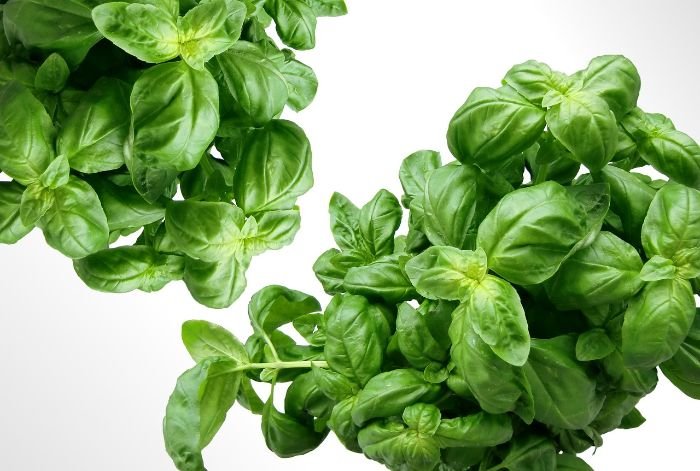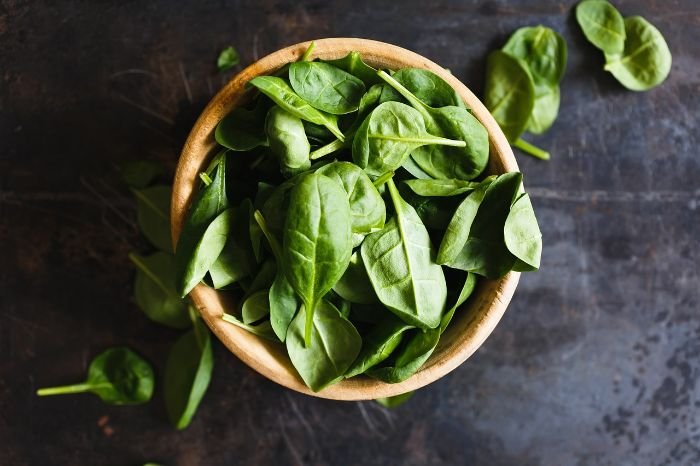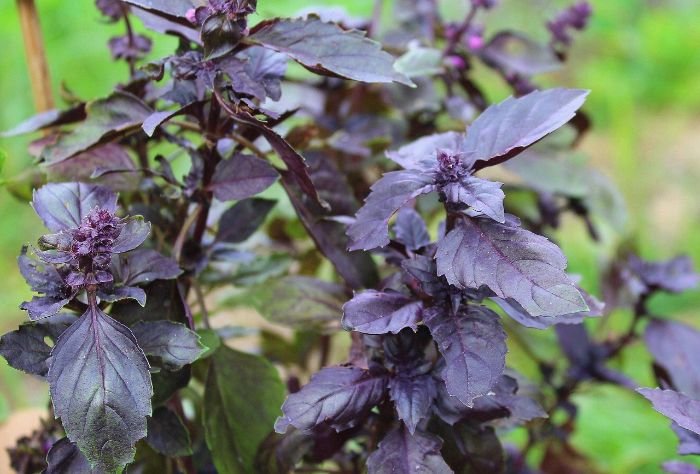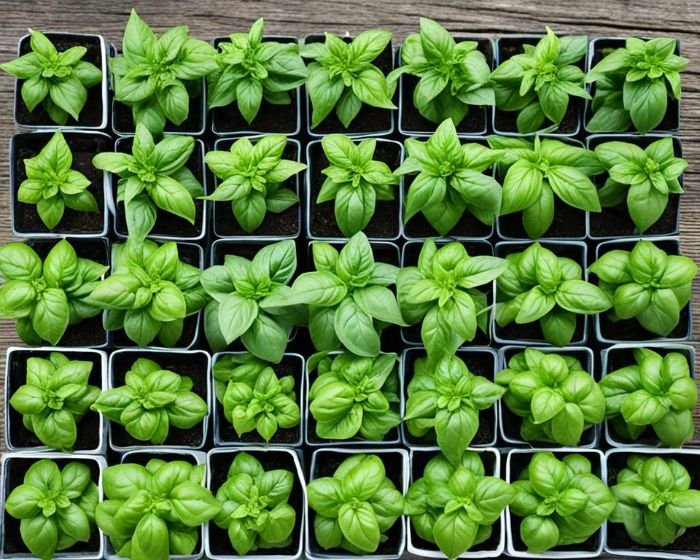Basil represents a complex genus within the mint family, exhibiting marked diversity in flavor chemistry, leaf morphology, and culinary applications. Each cultivated variety expresses a unique profile of aromatic compounds, driving its preferred use in global cuisine. Understanding these distinctions allows for deliberate selection and pairing, advancing both flavor precision and cultural authenticity in cooking.
Key Takeaways:
- The genus Ocimum includes multiple basil varieties, each with a distinct volatile oil composition and culinary function.
- Sweet basil, Thai basil, lemon basil, purple basil, and holy basil are the most widely recognized types, each exhibiting specific flavor markers and traditional uses.
- Sweet basil’s high linalool content favors Italian sauces and fresh salads, while Thai basil’s estragole profile suits Southeast Asian stir-fries and curries.
- Lemon basil features pronounced citral levels, contributing intense citrus notes for salads, teas, and desserts.
- The choice of basil variety should align with both the dish’s regional origin and desired aromatic effect, optimizing culinary outcomes.
Table of Contents
Botanical Profile and Culinary Significance of Basil
Basil, a member of the mint family (Lamiaceae), holds a prominent position in botanical research and global culinary traditions. Its aromatic foliage, adaptive growth habits, and chemical variability have resulted in widespread cultivation across diverse climates. The flavor characteristics and culinary relevance of each basil type are determined by specific patterns in plant morphology and essential oil content.
Botanical Characteristics and Taxonomy
Basil species and cultivars demonstrate wide variation in leaf size, coloration, and growth form. Some plants display bright green foliage, while others express deep purple pigments due to anthocyanin concentration. The majority of culinary basils complete their life cycle in one growing season, though perennial forms are present in equatorial zones.
The sensory qualities of basil arise from complex mixtures of aromatic compounds. For example, linalool predominates in sweet basil, eugenol is prominent in certain spicy types, estragole appears at high concentrations in Thai basil, and citral is most abundant in lemon basil. Each compound contributes distinct olfactory and taste notes, influencing the ideal culinary pairing. Successful cultivation requires warm conditions, consistent sunlight, and well-aerated soil. Regular pruning not only encourages fuller growth but also prevents early flowering, extending leaf production.
Historical and Cultural Roles in Cuisine
Historical records indicate that basil first gained prominence in India, valued in both spiritual and healing contexts. As it migrated westward, basil was rapidly adopted by Mediterranean civilizations. Sweet basil became closely associated with Italian food, while Southeast Asian cuisines integrated varieties such as Thai basil into foundational recipes.
The cultural symbolism of basil varies widely. In Hindu practice, holy basil (Ocimum tenuiflorum) is regarded as sacred and is frequently used in daily rituals. Mediterranean folklore attributed opposing qualities to basil, associating it with both affection and superstition. Despite these differences, culinary use of basil expanded rapidly, driven by its capacity to impart complexity and authenticity to regional dishes.
Distinctive Sensory Attributes
The aroma and taste of basil are not uniform across varieties. Sweet basil delivers a combination of subtle spice and freshness. Thai basil presents a pronounced licorice character. Lemon basil introduces a clear citrus note. Purple basil provides both visual contrast and a mildly pungent flavor. Recognition of these sensory markers allows for precise matching with specific recipes and regional cooking styles.
Selecting the correct basil type for each dish enhances flavor integration and preserves traditional culinary profiles.
Recognizing Distinct Basil Types and Their Flavor Profiles
Understanding the unique characteristics of popular basil types directly improves both culinary accuracy and ingredient selection. Each cultivar expresses a specific balance of aromatic compounds, visual traits, and traditional uses that directly influence its suitability for particular recipes. Precise identification of basil varieties allows for improved flavor pairing and supports authentic dish preparation.
Sweet Basil – Flavor Foundation in Mediterranean Cuisine
Sweet basil (Ocimum basilicum) is the most frequently cultivated variety worldwide. The leaves are broad, smooth, and light green, producing a mildly sweet aroma with underlying spice. The dominant flavor components include linalool and eugenol, creating a profile suitable for Italian sauces, salads, and pestos.

Culinary applications focus on dishes where a clean, herbal note is desired. Sweet basil is typically added fresh at the end of cooking to preserve its volatile oils. Its adaptability makes it the default choice for classic Mediterranean recipes.
Thai Basil – Key Ingredient in Southeast Asian Dishes
Thai basil (Ocimum basilicum var. thyrsiflora) features narrower leaves and dark purple stems. The plant is distinguished by a robust licorice scent, attributed to high concentrations of estragole and anethole. Its flavor is sharp, spicy, and aromatic, supporting bold flavors in Thai and Vietnamese cuisine.
Common uses include green and red curries, stir-fries, and pho. Thai basil withstands higher cooking temperatures, which allows it to retain its structure and flavor when simmered or sautéed.
Lemon Basil – Citrus Aromatics for Light Preparations
Lemon basil (Ocimum × citriodorum) displays smaller, lighter green leaves and a distinctive citrus fragrance. The primary aromatic, citral, generates an intense lemon note that sets it apart from other types. This variety is favored in Southeast Asian and Middle Eastern dishes requiring a bright, refreshing element.
Typical culinary roles involve salads, herbal teas, marinades, and desserts. Lemon basil’s intense aroma supports both sweet and savory preparations, providing clarity and lift to recipes with complex flavor profiles.
Purple Basil – Visual Contrast and Subtle Spice
Purple basil (Ocimum basilicum ‘Purpurascens’) is valued for its deep violet foliage, resulting from high anthocyanin levels. The flavor profile is similar to sweet basil but with more pronounced spicy undertones. Its distinctive color enhances presentation in salads and garnishes.
Purple basil is often used raw to preserve its pigment and delicate taste. It also pairs effectively with tomatoes and soft cheeses, contributing both flavor and visual appeal.
Holy Basil – Medicinal and Culinary Uses in South Asia
Holy basil (Ocimum tenuiflorum, also known as tulsi) holds cultural and medicinal significance, particularly in India. The leaves are smaller and more serrated, with a peppery, clove-like taste supported by eugenol and other phenolic compounds.
In culinary contexts, holy basil is incorporated into herbal teas, curries, and stir-fries. Its primary use, however, remains in traditional medicine, where it is consumed for its reputed adaptogenic and anti-inflammatory properties.
Culinary Applications of Basil – Precision Pairings and Regional Techniques
The choice of basil variety determines both the aromatic impact and the cultural fidelity of a dish. Each type of basil aligns with specific cuisines and preparation methods, shaped by its dominant flavor compounds and physical properties. Mastering the correct use of these varieties enables chefs and advanced cooks to construct dishes with depth, clarity, and technical authenticity.

Optimal Pairings for Major Basil Types
Selecting the right basil for each recipe involves understanding both flavor compatibility and traditional usage. Sweet basil integrates best with Mediterranean dishes, where its mild, herbal profile supports tomato-based sauces, fresh salads, and pestos. Thai basil, with its sharper, licorice-like character, is indispensable in Southeast Asian curries, noodle bowls, and stir-fries. Lemon basil imparts intense citrus notes suited for salads, herbal teas, and light seafood preparations. Purple basil is often reserved for cold dishes and garnishes, where its color and subtle spice create both visual and sensory interest. Holy basil, less common outside Asia, is primarily featured in Indian and Thai cuisine, especially in herbal teas and quick-cooked stir-fries.
Basil Varieties and Their Signature Culinary Uses
| Basil Variety | Dominant Flavors | Signature Dishes | Typical Usage |
|---|---|---|---|
| Sweet Basil | Herbal, mild spice | Pesto, Caprese salad, pasta sauces | Fresh, added last |
| Thai Basil | Licorice, spice | Thai curries, Vietnamese pho | Withstands heat |
| Lemon Basil | Citrus, bright | Salads, teas, seafood, desserts | Raw or steeped |
| Purple Basil | Subtle spice, visual | Cold salads, garnishes, bruschetta | Raw, color retention |
| Holy Basil | Peppery, clove-like | Indian teas, Thai stir-fries | Briefly cooked |
Preparation Techniques for Maximum Flavor Retention
Preserving the integrity of basil’s aromatic compounds requires careful attention to preparation and timing. Fresh leaves should be torn or chiffonaded rather than chopped, as metal blades accelerate oxidation and loss of volatile oils. Sweet basil and purple basil are best incorporated at the end of cooking to avoid aroma dissipation. Thai and holy basil can withstand moderate heat, making them suitable for inclusion during sautéing or simmering.
Infusing basil in oils, teas, or syrups allows extraction of aromatic molecules for broader applications. When blending for pesto or herb pastes, minimizing processing time and immediate use preserves the vividness of both color and flavor.
Non-Traditional and Contemporary Applications
Culinary innovation has broadened basil’s utility beyond its classic roles. Modern uses include incorporating basil into cocktails, sorbets, and infusions, where volatile oils interact with alcohols or sugars to produce unexpected depth. Lemon and purple basil lend themselves particularly well to contemporary desserts and specialty drinks. Chefs have also adopted basil for fermentation, pickling, and even pairing with fruits in savory salads, revealing new dimensions to its sensory profile.
Culinary application of basil hinges on informed varietal selection, precise preparation, and an understanding of both traditional and experimental uses. This knowledge enables the elevation of simple recipes into refined, technically sound dishes. By matching each basil variety to its optimal role, cooks ensure clarity of flavor and alignment with both regional and contemporary culinary standards.
Growing and Harvesting Basil for Optimal Quality and Aroma
The quality of basil leaves used in cooking depends on precise control of cultivation and harvesting methods. Environmental factors, soil conditions, and timing all contribute to the intensity and purity of basil’s aroma and flavor. Both commercial producers and home gardeners must align horticultural practices with the biological requirements of each basil variety to achieve consistent, high-quality harvests.
Environmental Requirements and Cultivation Practices
Basil thrives in full sunlight, with at least six hours of direct exposure daily. Soil should be well-draining, rich in organic matter, and maintained at a slightly acidic to neutral pH (6.0–7.0). Adequate air circulation reduces disease risk. Regular watering, adjusted to avoid saturated soil, promotes healthy root development.

Seedlings or cuttings can be established indoors several weeks before the last frost, then transplanted outdoors when nighttime temperatures remain above 12°C (54°F). Spacing plants 20 to 30 centimeters apart promotes air movement and robust growth. Pinching terminal shoots encourages bushier plants and higher leaf yield, while removing flower buds extends the vegetative stage and preserves essential oil concentration.
Harvest Timing and Technique
The timing of harvest directly affects basil’s aromatic potency. Leaves reach peak flavor just before the plant flowers, when essential oil content is highest. Harvesting in the early morning, after dew has evaporated but before midday heat, preserves the integrity of volatile compounds.
To harvest, use sharp scissors or pruning shears to cut stems just above a leaf node, encouraging further branching. Never remove more than one-third of the plant at a time, as overharvesting reduces regrowth potential. For small-scale use, individual leaves may be picked as needed; for larger quantities, cut entire stems, then trim leaves immediately for storage.
Post-Harvest Handling and Storage
Basil is highly perishable, with leaves prone to bruising and oxidation. Immediate use after harvest is optimal, but short-term storage can be achieved by placing stems in a container of water at room temperature. Refrigeration is generally detrimental, causing leaf blackening and texture loss due to chilling injury.
For longer preservation, basil can be frozen whole, chopped, or processed into pastes and stored in airtight containers. Dehydration is less desirable, as it leads to substantial loss of aroma and flavor. Some producers utilize vacuum sealing and rapid freezing to retain the highest possible volatile oil content.
Cultivating basil with attention to light, soil, and harvest timing produces leaves with maximum aromatic quality. Precise handling after harvest preserves the delicate chemistry responsible for flavor and aroma, directly impacting culinary results. Rigorous horticultural practice remains the foundation for every high-performing basil-based dish.
Nutritional Value and Health Implications of Basil Consumption
Basil leaves are valued not only for their culinary contributions but also for their dense nutritional profile and potential health-promoting properties. The concentration of vitamins, minerals, and bioactive compounds varies among basil varieties, influencing both dietary value and therapeutic potential. Scientific examination of basil’s phytochemical content provides insight into its physiological effects and historical role in traditional medicine.
Nutritional Composition and Key Micronutrients
Fresh basil is a notable source of vitamin K, essential for blood clotting and bone metabolism. It also supplies moderate levels of vitamin A, which supports vision and immune function. Minerals such as iron, calcium, and magnesium are present in smaller quantities and contribute to metabolic and neuromuscular health.
Beyond macronutrients, basil contains antioxidants including beta-carotene, lutein, and zeaxanthin. These compounds play a role in cellular defense against oxidative stress. The exact concentrations vary depending on variety, cultivation method, and harvest timing.
Bioactive Compounds and Therapeutic Research
Basil’s essential oils include several compounds with documented antimicrobial, anti-inflammatory, and potential adaptogenic activity. Laboratory studies have documented inhibitory effects on certain bacteria and fungi, as well as suppression of inflammatory mediators in cell cultures.
Epidemiological and clinical research remains preliminary, but traditional medicine systems have long utilized basil extracts to alleviate digestive disturbances, modulate stress responses, and support respiratory health. Holy basil, in particular, is the focus of multiple studies investigating its adaptogenic and immunomodulatory potential.
Considerations for Dietary Integration
Incorporating fresh basil into daily meals increases intake of micronutrients and dietary antioxidants, though quantities are typically small compared to staple vegetables. Culinary use is generally safe; however, concentrated extracts or essential oils may interact with certain medications or cause adverse reactions at high doses. Pregnant individuals and those with specific health conditions should consult healthcare professionals before using basil therapeutically.
Basil’s role extends beyond flavor enhancement to include measurable nutritional and potential health benefits. Ongoing research into its bioactive compounds supports its historical use in traditional healing systems, though evidence-based dietary recommendations require further validation. Regular inclusion of fresh basil contributes to dietary variety and micronutrient intake without adverse risk for the general population.
Conclusion – Maximizing Basil’s Culinary and Nutritional Potential
Basil remains an indispensable herb for both professional chefs and advanced home cooks, offering a spectrum of flavor profiles and cultural associations. Careful selection among basil varieties allows for authentic replication of regional dishes and precise flavor engineering. When cultivated and harvested with attention to environmental and horticultural detail, basil delivers optimal aroma, taste, and nutritional value.
Beyond its culinary role, basil supplies micronutrients and bioactive compounds that contribute to dietary quality and align with longstanding practices in traditional medicine. Integrating fresh basil into daily cooking supports both gastronomic excellence and nutritional balance. As research continues to clarify the unique properties of each basil type, informed use will further enhance the value of this versatile plant in contemporary kitchens.
FAQ
What is the main chemical difference between sweet basil and Thai basil?
Sweet basil contains higher levels of linalool and eugenol, resulting in a balanced, mild flavor profile well suited for Mediterranean recipes. Thai basil is dominated by estragole and anethole, producing pronounced licorice and spice notes. This chemical distinction determines each variety’s optimal use in specific cuisines.
How can I maximize the flavor retention of fresh basil in cooked dishes?
Add basil leaves at the final stage of cooking or use them as a finishing garnish. Prolonged heat exposure causes rapid evaporation of volatile oils, which are responsible for the herb’s aroma and taste. Tearing leaves instead of chopping further minimizes oxidation and preserves essential oils.
Which basil variety is most appropriate for herbal teas, and why?
Holy basil (Ocimum tenuiflorum, or tulsi) is the preferred choice for herbal teas due to its high concentration of phenolic compounds, which impart a peppery, clove-like flavor and contribute adaptogenic and anti-inflammatory effects. Its traditional use in South Asian medicine further underscores its suitability for infusion.
Can different basil varieties be substituted for each other in recipes?
Substitution is possible but may alter both flavor and authenticity. For example, using sweet basil in a Thai curry will reduce the licorice notes typical of the dish, while replacing sweet basil with Thai basil in pesto will introduce atypical spice and complexity. Substitutions should consider both the target flavor profile and the dish’s regional origins.
What are the signs of nutrient deficiency or environmental stress in basil plants?
Key indicators include yellowing leaves (nitrogen deficiency), purpling of leaf veins (phosphorus deficiency), stunted growth (insufficient light), and leaf curling or blackening (overwatering or chilling injury). Identifying and addressing these symptoms promptly maintains plant health and flavor quality.
Is it possible to preserve basil without significant loss of flavor or aroma?
Freezing basil, either whole or processed as a paste with oil, is the most effective method for retaining volatile compounds. Drying is less effective, as it results in substantial loss of aroma. Vacuum sealing and rapid freezing immediately after harvest further protect essential oils and pigment.
How do cultivation practices impact the chemical composition of basil leaves?
Sunlight exposure, soil nutrient balance, and timing of harvest all influence the concentration of aromatic compounds. For instance, basil grown under high light conditions tends to develop higher levels of volatile oils, leading to more intense aroma and flavor. Harvesting just before flowering maximizes essential oil content.
Are there any safety concerns related to consuming large quantities of basil or its extracts?
While culinary use of fresh basil is considered safe, concentrated extracts and essential oils may interact with medications or cause adverse effects in sensitive individuals. Pregnant women and those with underlying health conditions should consult healthcare professionals before using basil supplements or extracts therapeutically.










